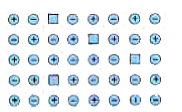Answer the following:
(i) What is the function of nephridia ?
(ii) Give three difference between frogs and toads.
(iii) What do you understand by open type of circulatory system ? Give a suitable example.
(iv) How many types of nephridia are found in earthworm based on their location ?
Step by step video & image solution for Answer the following: (i) What is the function of nephridia ? (ii) Give three difference between frogs and toads. (iii) What do you understand by open type of circulatory system ? Give a suitable example. (iv) How many types of nephridia are found in earthworm based on their location ? by Biology experts to help you in doubts & scoring excellent marks in Class 11 exams.
Updated on:21/07/2023Similar Questions
Answer the following
(i) What is the function of nephridia?
(ii) How many types of nephridia are found in earthworm based on their location ?
View SolutionWhat do you understand by bond pairs and lone pairs of electrons? Illustrate by giving one example of each type.
View SolutionWhat do you understand by bond pairs and lone pairs of electrons? Illustrate by giving one example of each type.
View SolutionWhat do you undestand by exothermic reaction and endothermic reaction? Give one example of each type.
View SolutionWhat do you mean by motion in one, two and three dimension ? Give examples of each type.
View Solution(i) Write the structural difference between starch and cellulose.
(ii) What type of linkage is present in Nucleic acids ?
(iii) Give one example each for fibrous protein and globular protein.
View Solution(i) Write the structural difference between starch and cellulose.
(ii) What type of linkage is present in Nucleic acids ?
(iii) Give one example each for fibrous protein and globular protein.
View Solution(a) List in tabular form two differences between an acid and a base based on their chemical properties.
(b) What do you understand by neutralization reaction ? Give two examples to illustrate your answer with equations.
View Solution(a) ''Respiration is a vital function of the body''. Justify this statement
(b) What is the main difference between aerobic respiration and anaerobic respiration ? Give one example of each.
(c) What type of repiration takes place (i) in yeast, and (ii) in humans ?
View SolutionExamine the illustration of a portion of the defective crystal given below and answer the following questions :
(i) What are these type of vacancy defects called ?
(ii) How is the density of a crystal affected by these defects ?
(iii) Name one ionic compound which can show this type of defect in the crystalline state.
(iv) How is the stoichiometry of the compound affected ?

View Solution
